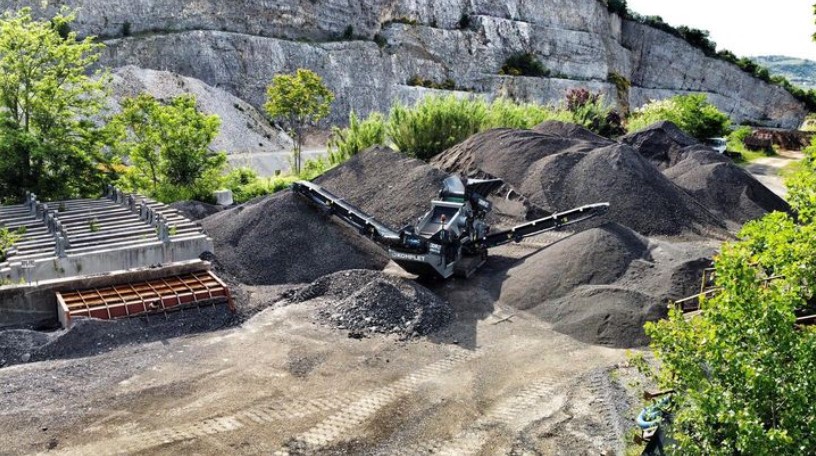Why the Krokodile Shredder by Komplet is the Best Multipurpose Shredder
Krokodile Shredder by Komplet stands as the best multipurpose shredder. Its versatility, robust design, and eco-friendly features make it ideal for recycling. Introduction Efficient waste management and recycling are essential for industries ranging from construction to manufacturing. The need for a machine that can handle a wide variety of materials—quickly, efficiently, and on-site—has never been greater. Enter the Krokodile multipurpose shredder by Komplet, a cutting-edge machine that offers unmatched versatility, power, and efficiency. Whether you’re shredding construction debris, tires, or wood, the Krokodile is engineered to deliver reliable performance, making it the top choice for businesses that demand high-quality, multipurpose shredding. Versatility at Its Core \The Krokodile shreddehttps://kompletaustralia.com.aur is celebrated for its unmatched versatility. It is designed to shred a wide range of materials, from construction and demolition (C&D) debris to more challenging waste types like tires, green waste, asphalt, wood, and even wet materials. The machine’s ability to handle diverse feedstock makes it a truly multipurpose solution, catering to industries such as construction, waste management, and recycling. This shredding machine is capable of handling materials that might otherwise require multiple specialized shredders. For businesses that work with varied waste streams, such flexibility translates into significant cost savings, as one machine can serve multiple roles, reducing the need for additional equipment. Compact, Mobile, and Powerful Despite its heavy-duty capabilities, the Krokodile stands out for its compact and mobile design. Many industrial shredders are bulky and stationary, making them difficult to transport and set up at different sites. The Krokodile, however, is engineered with maneuverability in mind. Its compact size allows it to fit easily into a 20-foot container for easy transport, while its tracks and skip hook system provide excellent mobility on-site, even in challenging terrain. With a Stage V 160 kW 220 HP Diesel engine, the Krokodile delivers high power while remaining energy efficient. It’s also available with Tier 4F or Stage 3A engines, ensuring compliance with various emission standards, making it a versatile option for different markets and regulations. Customizable Shredding Programs for Maximum Efficiency The Krokodile isn’t just powerful—it’s smart. It features customizable shredding programs, allowing operators to adjust the machine’s settings based on the type of material being processed. This level of control ensures optimal performance for each specific material, whether you’re working with dense construction debris or lighter, more fibrous green waste. The machine’s ability to adjust settings also helps prevent common issues such as material wrapping around the shredder’s components, which can slow down production. With the right program in place, the Krokodile maximizes throughput, ensuring consistent, high-output shredding. Auto-Reverse Function for Seamless Operations One of the standout features of the Krokodile shredder is its auto-reverse function. This feature plays a critical role in preventing material blockages, a common issue in many shredding operations. When a potential blockage is detected, the auto-reverse function kicks in, clearing the jam and allowing shredding to continue without interruption. By avoiding blockages and minimizing downtime, the Krokodile ensures that productivity remains high, making it an incredibly efficient solution for businesses with tight operational schedules. For industries like waste management, where downtime can mean delays and lost revenue, this feature is a game-changer. User-Friendly Controls and Remote Monitoring Operating the Krokodile shredder is as simple as it is efficient. It comes with complete remote radio control, enabling one-man operation. This means that an operator can control the shredder from a distance, enhancing safety and convenience, particularly in hazardous or challenging environments. Additionally, the Krokodile is equipped with a remote monitoring system, which allows operators to keep track of the machine’s performance and status in real-time. This feature is crucial for companies that want to stay on top of maintenance needs or monitor the shredder’s output remotely, helping prevent unexpected breakdowns and ensuring the machine operates at peak efficiency. Built for Durability and Long-Term Use Durability is key in any industrial shredder, and the Krokodile does not disappoint. Its robust design is built to withstand the harshest environments and the most demanding materials. The machine features 1500mm shafts with a torque of up to 160,000 Nm, providing immense shredding power even for tough, dense materials. The machine’s components are also wear-resistant, reducing the need for frequent replacements and lowering long-term maintenance costs. This durability ensures that businesses can rely on the Krokodile for years to come, making it a cost-effective investment in the long run. Fast Setup and Transport Time is money, and the Krokodile shredder respects that. With its quick setup design, businesses can have the machine operational in no time. The shredder features hydraulically folding conveyors, making it easy to transport and set up on different job sites without the need for heavy machinery. The tilting rear hopper is designed for optimized feed, allowing materials to be loaded smoothly into the shredder without bottlenecks or delays. Whether you’re transporting the shredder across job sites or setting it up for the first time, the Krokodile is built for efficiency from start to finish. Last to Say The Krokodile multipurpose shredder by Komplet is an industry-leading machine that offers a perfect blend of power, versatility, and efficiency. Its ability to shred a wide range of materials, combined with its compact design, customizable shredding programs, and smart features, makes it an invaluable tool for businesses across industries. It’s durable, mobile, easy to operate, and designed to handle the most challenging materials with ease, making it the ideal choice for businesses that want to maximize productivity and minimize waste.
Why the Krokodile Shredder by Komplet is the Best Multipurpose Shredder Read More »








